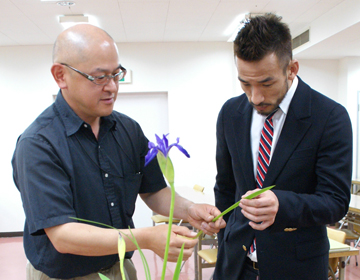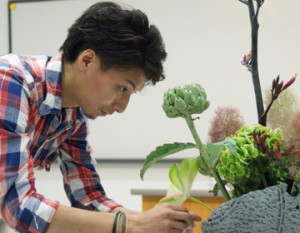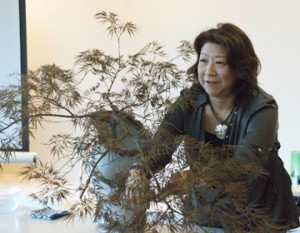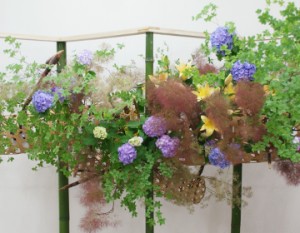Traditional Flower Arrangement and Free-style Flower Arrangement
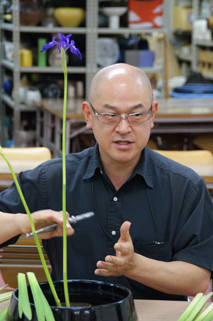
Founded in 1886, Ryusei-ha is a school of ”ikebana” which celebrated its 125th anniversary in 2011.
We talked to Kashu Yoshimura, Iemoto of Ryusei-ha. Originally an architect, he started to study the art of flowers as a way to learn more about void spaces, an element valued in ”ikebana”, hence his use of space is highly recognized and appraised. He arranges flowers in both the traditional Ryusei-ha method and in freestyle as well. Freestyle is done in large installations, He is not particular about material either, and has worked with artificial flowers as well.
Yoshimura said “Today, I’d like to have Nakata-san try out freestyle.” “Freestyle is actually the most difficult,” Nakata grimaced.
More about Nakata’s creation later. We’ll discuss the iris Yoshimura arranged first.
Seasonal Differences
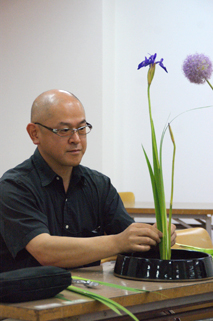
The iris, arranged in the traditional way. There are differences in style in each ikebana school, but the Ryusei-ha has “rules” and these rules need to be followed. For example, two leaves are joined together, and the positioning of the flower and leaves differs according to the season.
This time, the piece represents summer. The positioning of the flower should be at the top, which expresses its prime. For spring, the leaves are positioned higher than the flowers and depicts its growth in the oncoming season. For autumn and winter, fruit is used or sometimes dead leaves.
Nakata asked, “If the expressions are different by season, does that mean that what ikebana is trying to do is to reenact nature itself?”
“That is a good question. The objective is not just to depict nature, it’s ”whatever you want to express, though it may not grow that way in nature”. You should still try to value its natural state. In this piece, I used one bulb to express how an iris starts its growth in early summer. This is the exciting part, where you imagine what is being expressed.”
The difficulty of being free
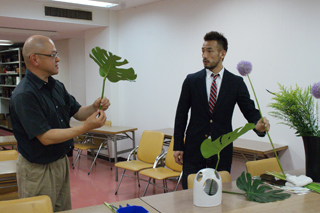
“Next is your turn!” Monstera leaves and a gigantium flower is prepared. With freestyle, any shape, color, vase, can be used. Nakata chose a unique white vase with many holes on the side.
“Maybe this might not be the best choice.” Nakata commented weakly. He started off with a pair of scissors and a monstera leaf in his hand. The first cut takes the longest time.
”The monstera leaf has a different expression when you look at it from the other side. From the side, it’s frilly. You can use it to express different things,” Mr Yoshimura advised. Nakata took a long time to arrange the monstera leaf. Then he took quite some time again with the gigantium.
He gradually starts to enjoy the “freedom” and eventually finishes. As soon as he finishes, he reaches out once again and bends the monstera leaf, tucks it under the flower to make it look like a flower placed on a plate.
“Does that look a bit crowded?” Nakata contemplated after looking at his work again.
“That is one way of expression. Take a look at it from the side. It shows another expression, does it not? And what if you place a branch here, then you would be able to create a partition and …” Freedom enhances so many ideas, and the conversation continues endlessly.



